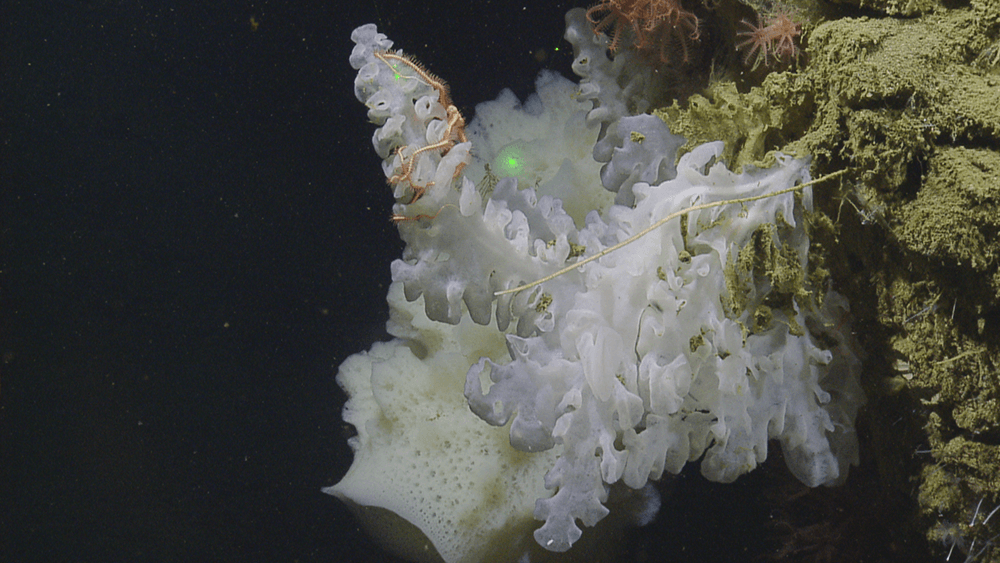New species of sponge discovered in Cordell Bank National Marine Sanctuary
By Jennifer Stock, Cordell Bank National Marine Sanctuary
June, 2020

Dozens of deep-sea sponges thrive off the California coast, but many are still unknown to science. Scientists recently described a new species of deep-sea sponge in Cordell Bank National Marine Sanctuary, located 50 miles northwest of San Francisco.
The white ruffled sponge is named Farrea cordelli for its discovery in the 1,286 square mile sanctuary, which protects and preserves the extraordinary marine ecosystem surrounding Cordell Bank, on the edge of the continental shelf. Cordell Bank National Marine Sanctuary provides a home to colorful and abundant invertebrates, algae, and fishes.
Danielle Lipski, research coordinator for Cordell Bank National Marine Sanctuary and lead scientist for the expedition was aboard with scientists on the Exploration Vessel Nautilus when they collected a portion of the white sponge during an expedition in the Fall of 2017.
“When we explore, we are looking to document and understand the habitats, conditions and species so that we know what is there,” Lipski said. “As a national marine sanctuary, our job is to protect the entire ecosystem within its borders, including the water and seafloor. We need to know what is there as a first step to effective protections.”
Scientists aboard the E/V Nautilus used a remotely operated vehicle (ROV) to collect the individual specimen. Dr. Henry Reiswig, a sponge expert with the Royal British Columbia Museum described this new species. Reiswig studied the collections using a scanning electron microscope to study the skeletal structure of the sponges.
Sponges can be challenging to identify by photos alone and must be studied under the microscope to confirm species. Sponges attach to rocks and filter the water for detritus and plankton that rains down from surface waters. They also provide habitat for other animals living in the deep. The specimen of the new species was collected in Box Canyon at a depth of 2,100 meters, nearly 7,000 feet deep. In addition to the new species of sponge, other sponge collections on the same cruise revealed range and depth extensions. The findings were published in Zootaxa, a peer reviewed journal.
Globally, we have a lot to learn about deep sea sponges in terms of ecological function in the ocean, but also for medical value for humans. Some species of sponges have properties that aid in medical treatment of human diseases. The technology to reach deeper areas of the ocean continues to improve, providing opportunities for scientists to learn more about these deep sea environments. In Cordell Bank National Marine Sanctuary, only a small fraction of these deeper areas have been explored.
Understanding the deep sea communities in national marine sanctuaries is a critical step in protecting sensitive ocean ecosystems. The ability to search deeper and discover new species provides a significant advance in our knowledge of the deep sea ecosystem and diversity and significantly advances in CBNMS, and along the west coast of North America.

